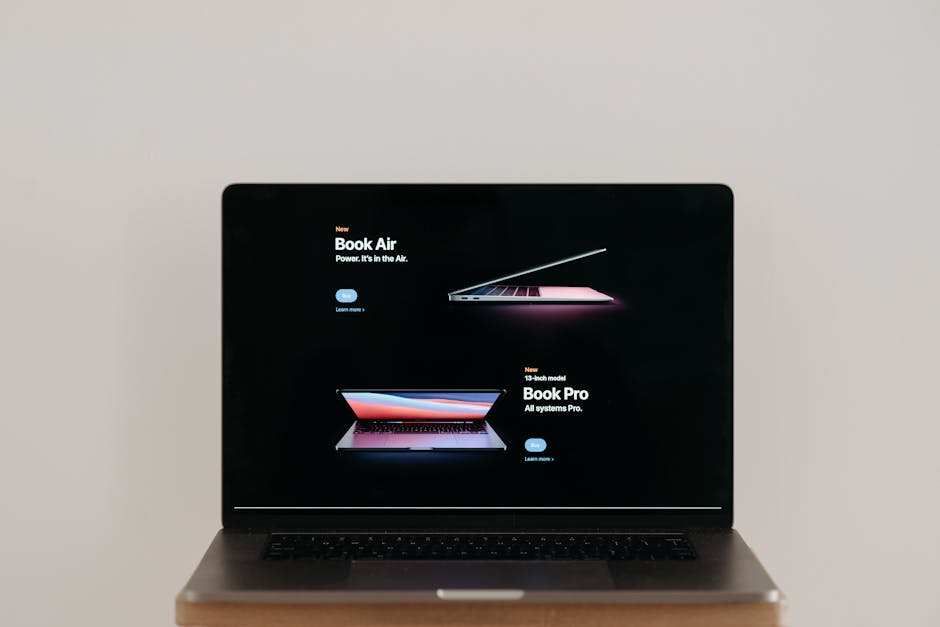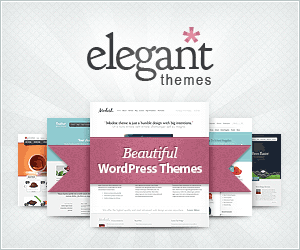Online marketing and web design: 5 Powerful Success Secrets 2025
The Powerful Connection Between Design and Marketing
Online marketing and web design are inseparable components of a successful digital strategy. When properly integrated, they create a powerful synergy that drives business growth.
| The Relationship Between Web Design and Online Marketing |
|---|
| ✓ Well-designed websites can improve conversion rates by up to 200-400% |
| ✓ 75% of consumers judge a company’s credibility based on website design |
| ✓ First impressions are 94% design-related, forming in just 50 milliseconds |
| ✓ Mobile-friendly sites lead to 67% more conversions than non-responsive ones |
| ✓ Consistent branding across platforms can increase revenue by up to 23% |
Your website is the digital storefront where most potential customers will first encounter your business. In today’s connected world, with 64.6% of the global population online, a website that merely looks good but doesn’t perform is like a beautiful store with no cash register.
Effective web design goes beyond aesthetics – it creates intuitive pathways that guide visitors toward conversion while reinforcing your brand identity. Meanwhile, smart marketing strategies drive targeted traffic to your site, ensuring your message reaches the right audience at the right time.
When these disciplines work in harmony, the results are measurable: lower bounce rates, higher engagement, increased time on site, and ultimately, more conversions and sales.
I’m Randy Speckman, founder of Randy Speckman Design, where I’ve spent over a decade helping small businesses integrate online marketing and web design to achieve remarkable growth through strategic websites that convert visitors into customers.

Online marketing and web design terms at a glance:
– Digital solutions for small business
– build a web site
– build a website for my business
Why Online Marketing and Web Design Are Inseparable
Let’s be honest—online marketing and web design are a lot like your favorite dynamic duo. Imagine peanut butter without jelly, or Batman without Robin. One might get the job done, but together? That’s where the magic happens.
At its core, your website’s design is the stage where your entire digital marketing performance unfolds. It’s the place where your brand story, trustworthiness, and sales potential all come together. Meanwhile, your marketing—whether it’s SEO, email, or pay-per-click—is what brings people to that stage. When design and marketing join forces, every effort is amplified and every marketing dollar stretches further.
Online Marketing and Web Design: Two Halves of One Customer Journey
Your customer’s journey doesn’t start with a Google search or end with a click. Instead, it’s a smooth path—one where design and marketing walk hand in hand from the first impression to final checkout (and hopefully, beyond).
Brand identity and cohesive messaging are the glue here. Fonts, colors, and images on your site shouldn’t feel out of place compared to your ads or social media. Keeping your branding consistent can actually help increase revenue by up to 23%. It sends a signal of trust and professionalism that sets you apart.
And let’s not forget about KPI ownership. Designers and marketers share the same scoreboard: bounce rate, conversion rate, and customer lifetime value. When both teams are in sync, everyone’s working toward the same goals—and it shows in your results.
The Revenue Impact of Seamless Design-Marketing Collaboration
If you’re aiming for more conversions and better ROI, integrating your design and marketing teams is non-negotiable. Just look at the numbers: a well-designed site can deliver a whopping 200–400% lift in conversions. And since 75% of users judge a company’s credibility by its website design alone, you can see how important this partnership is for building trust.
But there’s another secret weapon—analytics integration. When marketing and design teams share data, they can adapt faster and make smarter changes. Marketing insights drive design improvements, and fresh designs give marketing campaigns an edge. It’s a feedback loop that keeps getting better with every cycle.

Let’s compare what happens when teams work in silos versus when they collaborate:
| Siloed (Separate) | Integrated (Teamwork!) | |
|---|---|---|
| Branding | Inconsistent | Unified across platforms |
| User Flow | Disjointed | Seamless, conversion-focused |
| SEO | Often overlooked | Baked in from day one |
| Data | Tracked in silos | Shared dashboards, agile tweaks |
| Results | Mediocre | Optimized, measurable growth |
When online marketing and web design come together, you’re not just getting a prettier website—you’re building a seamless, trustworthy experience that earns conversions and grows your business. At Randy Speckman Design, we believe this collaboration is the secret to open uping real, measurable digital success.
Essential Web Design Elements That Boost Digital Marketing
When it comes to online marketing and web design, great looks are only half the story. The real magic happens when design choices drive real business results—more leads, more sales, and happier customers.
A high-performing marketing website does more than turn heads—it guides your visitors every step of the way. Navigation clarity is non-negotiable; when people can find what they need without hunting, they stick around longer (and are far more likely to convert). Add in a responsive grid, and your site will look sharp and work perfectly whether someone is browsing on a laptop, tablet, or phone.
Fast load times are essential too. Did you know almost half of your visitors expect your website to load in under two seconds? Blink, and you might miss them! That’s why optimizing images, using a content delivery network (CDN), and enabling lazy-loading are must-haves.
But speed is just the start. A smart visual hierarchy highlights what matters most—think strategic placement of offers, contact forms, and those all-important strong CTAs. When your buttons are clear and eye-catching, visitors know exactly what action to take next. Don’t forget the small stuff: micro-copy (those little notes on forms or buttons) can answer questions, build trust, or simply make someone smile.
Accessibility is another superpower. An inclusive design makes sure everyone—regardless of ability—feels welcome. Plus, accessibility features like readable fonts, good contrast, and alternative text for images are great for SEO and open your business to a wider audience.
And then there’s Core Web Vitals—Google’s way of measuring the health of your site for speed, interactivity, and visual stability. Nail these, and you’ll not only please your visitors, but you’ll climb the search rankings as well.

Speed, Responsiveness, Mobile Love
Picture your website as an Olympic gymnast—fast, flexible, and always landing on its feet. More than half of today’s online traffic is on mobile, and responsive design is now a must, not a maybe. Mobile-friendly sites see a whopping 67% more conversions than those that aren’t.
If you want to impress both users and Google, pay attention to your Core Web Vitals: Largest Contentful Paint (LCP), First Input Delay (FID), and Cumulative Layout Shift (CLS). These measure how quickly your site loads, responds, and stays stable as users interact with it. Simple tweaks like lazy-loading images and using a CDN can make a world of difference.
Want to dive deeper? Learn more about Best SEO Web Design.
SEO-Ready Architecture Baked Into Design
SEO isn’t something you sprinkle on at the end. It’s part of the recipe from day one. Start with semantic HTML5—the language search engines (and assistive devices) love. Internal linking keeps both users and Google wandering through your content, boosting time-on-site and supporting your keyword strategy.
Don’t forget schema markup—it’s like giving Google a VIP backstage pass to your site, which can help you earn those attractive rich snippets in search results. And always use alt text for your images; it’s a win for accessibility and for SEO.
Curious about what your audience is actually searching for? Check out this Google Keyword Planner guide to find the phrases that can bring in more business.
Conversion-Driven Visuals & Copy
Design and copywriting are the dynamic duo of online marketing and web design. Place your most important CTAs “above the fold”—right where eyes land first. Show off social proof like testimonials, reviews, and trust badges to build confidence with new visitors.
Color has power too—subtle shifts can create urgency or calm anxieties. A bright, inviting CTA button draws attention, while a trustworthy blue can make visitors feel safe. And with A/B testing, you don’t have to guess what works. Try out different headlines, button colors, or layouts, and let the data show you what really clicks.
Take it from INSIGHT2PROFIT: after updating their homepage with bold statistics, intuitive navigation, and prominent CTAs, they saw a jump in both engagement and new leads.
At Randy Speckman Design, we know that every element—big or small—should work together to support your marketing goals. When online marketing and web design truly click, your website becomes your best salesperson, working 24/7 to grow your business.
How Design Choices Shape Marketing Metrics
When it comes to online marketing and web design, every design decision affects your bottom line. The colors you pick, the way you arrange your content, and even your font sizes—all of these “little” choices can move the needle on key marketing metrics.
Let’s start with bounce rate. If your homepage looks crowded or navigation feels like a maze, visitors won’t stick around. Clean layouts and straightforward menus help guide people exactly where they want to go, reducing bounce and encouraging them to explore.
Engagement is next. When your site is visually appealing, loads quickly, and offers interactive features like clickable elements or subtle animations, users naturally spend more time clicking, scrolling, and interacting. Smart use of imagery, video, and micro-interactions can transform a “skim-and-leave” visit into a genuine conversation.
Conversion Rate Optimization (CRO) is where design really shines. Thoughtful page layouts, strategically placed CTAs, and color choices that draw attention to signup or contact buttons all work together to turn casual visitors into paying customers. Even small tweaks—like changing a button from gray to vibrant green—can make a surprising difference.
Over time, these thoughtful touches also boost Customer Lifetime Value (CLV). When your site is memorable, easy to use, and feels welcoming, customers are more likely to return, recommend you to friends, and stick with your brand.

Integrating Analytics and Tracking Into the Build
At Randy Speckman Design, we believe that data is your secret weapon. We bake analytics right into your website from the very start, making sure every key event—like form submissions, button clicks, and scroll depth—is tracked. Tracking pixels are added to measure how well your ads are performing, so you always know which marketing dollars are bringing results.
We don’t hoard this data either. Real-time dashboards mean you (and our team) can see what’s working and make quick, informed changes to your content or campaigns. That way, your online marketing and web design efforts keep getting smarter.
Want to see how it works? Read more about SEO and Web Design.
From Clicks to Customers: Bridging Design and PPC
Imagine paying for ads, only to have visitors bounce because your landing page didn’t deliver. Ouch! With great design, your landing pages reinforce your ad’s promises, match messaging, and guide visitors to one clear next step.
Google’s Quality Score rewards sites that are relevant and easy to use, making your ads cheaper and more effective. Keeping the look and feel consistent from ad to landing page builds trust—and trust leads to conversions. Focus your landing pages on a single conversion goal, remove distractions, and keep headlines in sync with your ad copy for the best results.
And if you want to level up, tools like Moz Pro help you spot SEO and PPC opportunities so you can keep improving.
Online Marketing and Web Design Fuel Higher Search Visibility
A well-designed site doesn’t just look good—it helps you get found. Logical site structure makes it easy for both users and search engines to steer. By organizing your pages and using clear internal links, you help Google allocate its crawl budget efficiently, focusing on your most important content.
It’s also crucial to avoid duplicate content—each service or product should have its own dedicated page. This makes your offerings clearer to both customers and search engines, while boosting your chances of ranking higher.
If you want to dig deeper into the connection between design and SEO, check out The Role of Website Design in Search Engine Optimization (SEO).
In the end, every pixel, button, and layout decision impacts your marketing metrics. When online marketing and web design work hand-in-hand, your website doesn’t just attract more visitors—it turns them into loyal customers.
Future-Proofing: Trends That Will Redefine Online Marketing and Web Design
The digital world never stops evolving. To keep your business thriving, you need to stay a step ahead—especially when it comes to online marketing and web design. The trends shaping tomorrow’s web aren’t just about fancy tech; they’re about real connections, smarter strategy, and building trust in every pixel.
We’re seeing AI-powered personalization take center stage, with sites that greet visitors by name and serve up the exact content they want, right when they want it. Imagine a website that feels like it “gets” you. And as more people talk to their devices, voice search optimization is becoming essential—your site should understand questions as well as keywords.
The boundary between online and real life keeps blurring, too. AR/VR experiences are bringing products to life with virtual try-ons and immersive showrooms. Meanwhile, conversational UIs—think chatbots and voice assistants—help website visitors get answers in seconds, not hours.
Of course, with greater tech comes greater responsibility. Privacy-first analytics are a must if you want to build user trust. Gather just what you need and respect your visitors’ data at every step. And let’s not forget Mother Earth: sustainable web design—with lighter code and eco-friendly hosting—is becoming the new normal for businesses that care about their impact.

Responsive, Immersive, and Accessible by Default
Looking ahead, the best websites will be responsive, immersive, and accessible for everyone, by default. Meeting WCAG 2.2 standards won’t just help you avoid legal headaches—it’s the right thing to do, and it welcomes a wider audience.
Small but mighty micro-interactions—like a button that gives a friendly wiggle or a checkmark that pops up when a form is complete—make sites feel alive. Features like dark mode are now expected, offering a more comfortable experience for night owls and anyone with tired eyes. And of course, inclusive design means nobody gets left out, no matter their device or ability.
Omnichannel Consistency Across Emerging Touchpoints
Your brand doesn’t just live on your website. These days, it has to feel seamless everywhere—email, social media, apps, and wherever your customers might connect. Design systems and tools like a headless CMS make it easier to keep everything in sync, so your brand voice stays strong whether someone’s reading your newsletter or tapping through your Instagram stories.
Customers might spot you on social, browse your site on mobile, and finish up in your app. Omnichannel consistency ensures their journey feels smooth and familiar at every touchpoint.

At Randy Speckman Design, we’re always watching what’s next in online marketing and web design—so your business stays ahead and your customers keep coming back.
Frequently Asked Questions about Online Marketing and Web Design
How often should I redesign my site to stay competitive?
Think of your website like a living, breathing part of your business—not a “set it and forget it” project. As a general rule, a refresh every 2 to 3 years will keep you looking sharp and ahead of the curve. But don’t just go by the calendar. Keep an eye on your analytics: if you notice your bounce rates climbing, your conversions dropping, or you’re starting to look a little old school next to your competitors, it might be time for an update—even if it’s sooner than planned.
With online marketing and web design evolving so quickly, staying current isn’t just about style. It’s about making sure your site keeps working hard for your business.
What common design mistakes hurt marketing performance the most?
There are a few classic web design blunders that can quietly kill your marketing results. One of the biggest is slow load times—if your site takes longer than two seconds, expect visitors to vanish. Confusing navigation is another culprit; if users can’t find information fast, they won’t stick around.
A lack of mobile optimization is a deal-breaker in today’s mobile-first world. Even the best offers can fall flat if your site isn’t easy to use on a phone. Weak calls-to-action (CTAs) bury your value, making visitors hunt for what they should do next. And let’s not forget inconsistent branding—if your colors, fonts, or messaging differ across platforms, it chips away at trust.
Finally, accessibility oversights can shut out visitors with disabilities. That’s not just bad for business, it can also hurt your SEO.
How can small businesses balance aesthetics and budget?
Great news: you don’t need a million-dollar budget to have an effective website. The key is to prioritize what matters most. Focus first on clear navigation, fast page speeds, and strong, consistent branding. These fundamentals do the heavy lifting for both online marketing and web design.
Platforms like WordPress and Squarespace offer affordable, flexible templates to get you started. And remember, investing in smart strategy—like user experience (UX), conversion rate optimization (CRO), and basic SEO—often delivers a much better return than flashy graphics or bells and whistles.
A small, thoughtful investment in the essentials will outperform a big spend on things that don’t help your audience. And if you’re not sure where to start, the team at Randy Speckman Design is always here to help you find the right balance for your business goals.
Conclusion
At Randy Speckman Design, we know that results-oriented web design isn’t just a nice-to-have—it’s the smartest investment you can make for your business’s digital growth. When online marketing and web design work hand in hand, your website does more than look good. It becomes your single source of truth—a trustworthy, growth-driving tool that works for you 24/7.
No matter if you’re a small business owner in Kennewick, WA, or running a growing brand anywhere in the country, our team brings a blend of marketing know-how, digital strategy, and proven conversion optimization to every project. We don’t believe in building “pretty but pointless” websites. Instead, we focus on digital experiences that actually move the needle—attracting visitors, building trust, and turning clicks into customers.
Want to see what happens when good design and smart marketing join forces? We’re here to help you go from “just another site” to a magnetic online presence people remember. Let’s build a website that’s made for marketing, designed for humans, and engineered to deliver real-world results.
Learn more about our small-business web design services and see how we can help you grow.
Curious what your business could achieve with the right strategy? Contact us for a free strategy session. Let’s create some digital magic together!
Randy Speckman Design — Your partners in web design, marketing, and business success.




